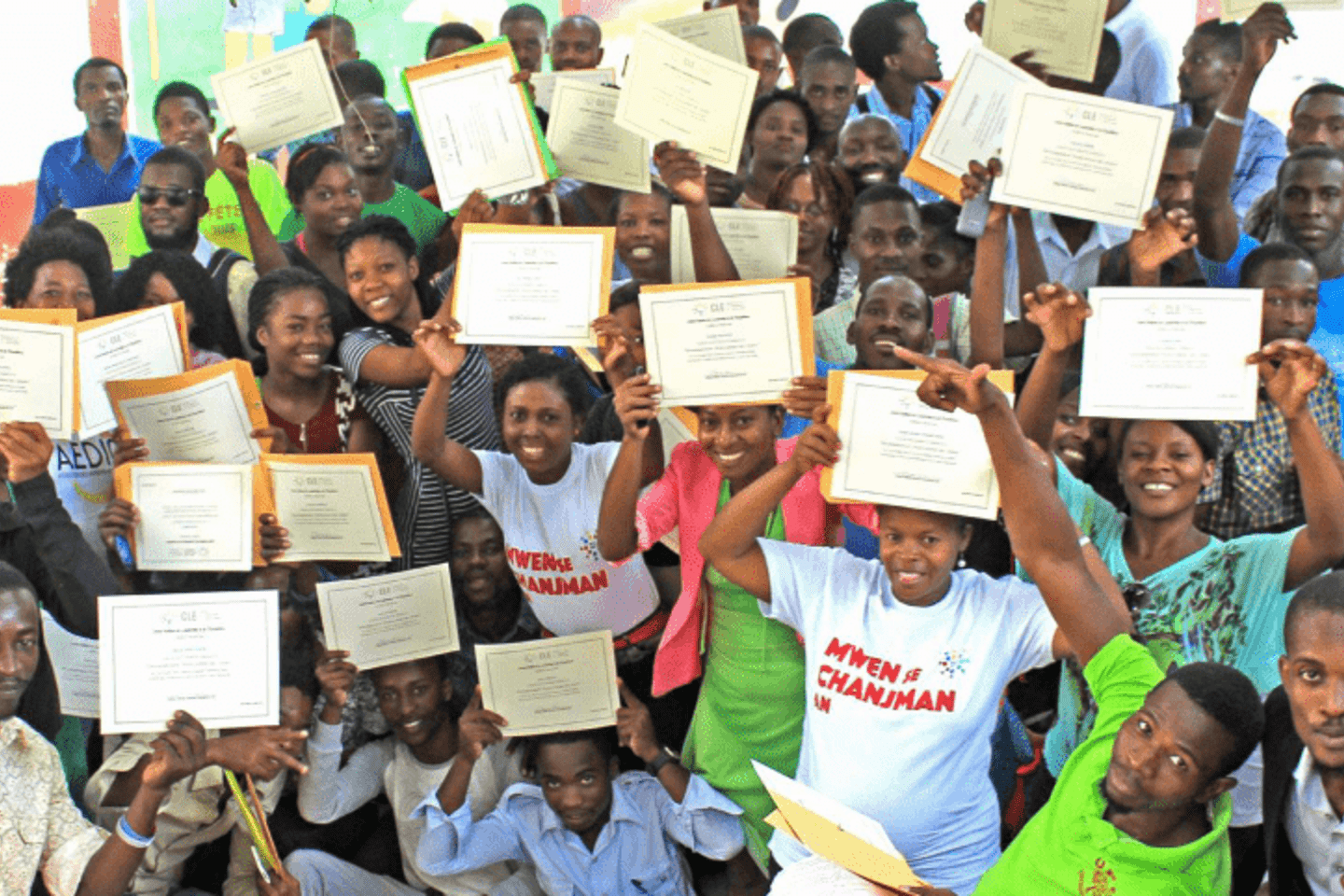
Lisez cette article en français ici !
Haiti has decided. After nearly 28,000 SMS votes were tallied, the five Chanpyon Lakay, or “champions of the house” in Creole, were revealed on May 24. All are local youth leaders who are improving their communities through innovative and sustainable projects.
The months-long countdown to last week’s contest finale featured feverish campaigning by the 10 finalists – Alix, Annaisa, Exson, Katerine, Laurore, Marheline, Modelyn, Naichka, Norisner and Odel – who mobilized all their supporters and participated in interviews on the radio and Facebook Live. They were all aiming for a top-five finish, which comes with a grant to study in Canada and 50,000 gourdes (about $575) to invest in their project. By earning a top-ten placement, they had already secured at least 35,000 gourdes (about about $400) for their initiative.
"I already consider myself a champion,” said Modelyn Henry, who is working to mobilize his community to improve public services, before the announcement. “Regardless of who they are, I will be happy to embrace and congratulate the winners, because I know exactly how much they worked, having made the same trip as them."
Meet the champions: Who would you vote for?
Chanpyon Lakay is an initiative of the Haitian Center for Leadership and Excellence (CLE), an institution born in the aftermath of the devastating earthquake that struck the country in 2010. It is funded in part by the IDB.
"CLE is in fact the brain child of dynamic and exemplary leaders from all sectors, invited to join in multiple discussions shaping the mission and vision of the project," explains co-founder Maryse Pénette-Kedar.
The group’s goal was to change the way Haitians understood the “leader” figure – a role which they felt many of their fellow citizens associated with individual ambitions and a transactional approach as well as with people external to the community they are supposed to work for. Instead, the project wanted to promote a new “leader” concept by highlighting examples of successes and innovations from around the country.
The first step was to identify and document positive examples of leadership. They identified a dozen case studies, such as one from the town of Ouanaminthe in the northeast of the country, where a community initiative developed a system of roads to enable travel to the nearby border with the Dominican Republic. CLE then began to train and connect Haitian leaders working on such local projects, many of whom were receiving extremely little support. Little by little, they began to build a map of success to share the stories.
Map: check the projects and where they are located
CLE’s methodology is based on promoting self-reliance and resilience, a model that studies say can generate better results than business-training programs. The process consists of identifying and harnessing the resources that the community already has – human, economic, natural, organizational – rather than focusing on the needs. It also works to promote mutually beneficial partnerships with the international community, encouraging relationships based on investment instead of the provision of aid.
This approach complements the IDB’s efforts to improve the business climate, increase access to essential public services and strengthen institutional capacity in the country.
In the eight years since its birth, CLE has managed to reach all 10 departments in the country, including both rural and urban areas. More than 2,500 people have participated in its activities. The group’s success in reaching a diverse population led to the idea of a contest.
What makes a good Chanpyon Lakay? According to the rules of the competition, they must be leaders who actively engage beneficiaries in projects that are sustainable both economically and environmentally, that integrate innovations, and that take into account minorities and gender perspective.
And the winners are...
"These young people are doing amazing things, creatively using all the resources and opportunities available to bring change to their communities," says CLE’s Pénette-Kedar.
Katerine Vital, a 26-year-old from southeast Haiti, garnered almost 4,000 SMS votes to finish in first place. Her project involves collecting organic waste and converting it into compost to reduce waste and support organic agriculture at the same time.
"Thanks to the competition, I have already been contacted by several people interested in joining my recycling project... Even the Environmental Ministry wants to finance my project, which would allow me to incorporate more advanced techniques," she says.
Vital’s project, like the others featured in the competition, is just getting under way and will require a lot of effort. But, as second-place finisher Naichka Leonard says, "A Chanpyon Lakay is one who believes in himself, has dreams and a plan, and takes actions every day to carry it out."
For more information on CLE's community leadership work, visit their website.
